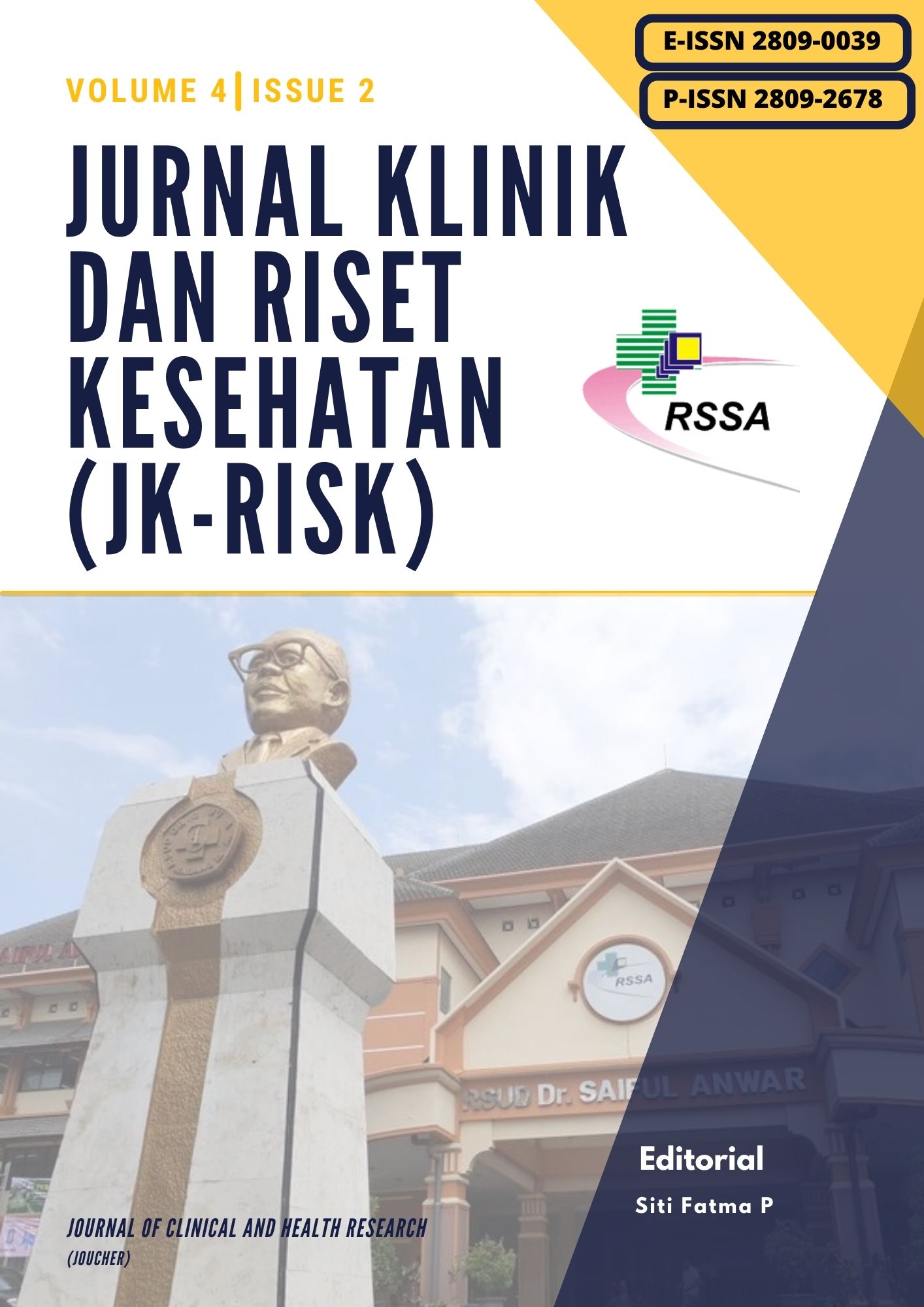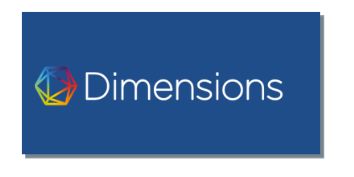Non Invasive Imaging Modalities in Chronic Coronary Syndrome
DOI:
https://doi.org/10.11594/jk-risk.04.2.7Keywords:
Chronic Coronary Syndrome, Cardiovascular Imaging, Stress echocardiography, Coronary Computed Tomography Angiography, Cardiac Magnetic ResonanceAbstract
Advancements in non-invasive cardiovascular imaging technology have introduced robust diagnostic modalities for managing cardiovascular diseases. Three prominent techniques in this domain are stress echocardiography, coronary computed tomography angiography (CCTA), cardiac magnetic resonance imaging (CMR), Single Photon Emission Computed Tomography (SPECT), and Positron Emission Tomography (PET). These modalities provide crucial information for accurate diagnosis and optimal therapeutic planning. Stress echocardiography occupies a strategic position in the diagnostic algorithm, particularly in suspected or confirmed cases of coronary artery disease. The strength of this modality lies in its ability to provide a comprehensive picture of myocardial functional status. Meanwhile, CCTA offers superiority in visualizing and characterizing atherosclerotic plaques in coronary vessels, enabling early detection and more precise risk stratification. This literature review aims to explore critical aspects of non-invasive cardiovascular imaging modalities in the context of diagnosing Chronic Coronary Syndrome.
Downloads
References
Steinbach LS. Cardiac imaging. Magn Reson Imaging Clin N Am. 2015;23(1):xv.
Group APGW, Beck KS, Kim JA, Choe YH, Hian SK, Hoe J, et al. 2017 Multimodality Appropri-ate Use Criteria for Noninvasive Cardiac Imag-ing: Expert Consensus of the Asian Society of Cardiovascular Imaging. Korean J Radiol. 2017;18(6):871-80.
Vrints C, Andreotti F, Koskinas KC, Rossello X, Adamo M, Ainslie J, et al. 2024 ESC Guidelines for the management of chronic coronary syn-dromes. Eur Heart J. 2024.
Pellikka PA, Arruda-Olson A, Chaudhry FA, Chen MH, Marshall JE, Porter TR, et al. Guide-lines for Performance, Interpretation, and Ap-plication of Stress Echocardiography in Is-chemic Heart Disease: From the American So-ciety of Echocardiography. J Am Soc Echocar-diogr. 2020;33(1):1-41 e8.
Kramer CM, Barkhausen J, Flamm SD, Kim RJ, Nagel E, Society for Cardiovascular Magnetic Resonance Board of Trustees Task Force on Standardized P. Standardized cardiovascular magnetic resonance (CMR) protocols 2013 up-date. J Cardiovasc Magn Reson. 2013;15(1):91.
Sokolska JM, von Spiczak J, Gotschy A, Kozerke S, Manka R. Cardiac magnetic resonance imag-ing to detect ischemia in chronic coronary syn-dromes: state of the art. Kardiol Pol. 2019;77(12):1123-33.
Nagel E, Lorenz C, Baer F, Hundley WG, Wilke N, Neubauer S, et al. Stress cardiovascular magnetic resonance: consensus panel report. J Cardiovasc Magn Reson. 2001;3(3):267-81.
Romero J, Xue X, Gonzalez W, Garcia MJ. CMR imaging assessing viability in patients with chronic ventricular dysfunction due to coro-nary artery disease: a meta-analysis of pro-spective trials. JACC Cardiovasc Imaging. 2012;5(5):494-508.
Schwitter J, Arai AE. Assessment of cardiac is-chaemia and viability: role of cardiovascular magnetic resonance. Eur Heart J. 2011;32(7):799-809.
Gebker R, Jahnke C, Manka R, Hucko T, Schnackenburg B, Kelle S, et al. The role of do-butamine stress cardiovascular magnetic reso-nance in the clinical management of patients with suspected and known coronary artery disease. J Cardiovasc Magn Reson. 2011;13(1):46.
Task Force M, Montalescot G, Sechtem U, Achenbach S, Andreotti F, Arden C, et al. 2013 ESC guidelines on the management of stable coronary artery disease: the Task Force on the management of stable coronary artery disease of the European Society of Cardiology. Eur Heart J. 2013;34(38):2949-3003.
Knuuti J, Wijns W, Saraste A, Capodanno D, Barbato E, Funck-Brentano C, et al. 2019 ESC Guidelines for the diagnosis and management of chronic coronary syndromes. Eur Heart J. 2020;41(3):407-77.
Gotschy A, Niemann M, Kozerke S, Luscher TF, Manka R. Cardiovascular magnetic resonance for the assessment of coronary artery disease. Int J Cardiol. 2015;193:84-92.
Narula J, Chandrashekhar Y, Ahmadi A, Abbara S, Berman DS, Blankstein R, et al. SCCT 2021 Expert Consensus Document on Coronary Computed Tomographic Angiography: A Report of the Society of Cardiovascular Computed Tomography. J Cardiovasc Comput Tomogr. 2021;15(3):192-217.
Achenbach S, Raggi P. Imaging of coronary atherosclerosis by computed tomography. Eur Heart J. 2010;31(12):1442-8.
Neves PO, Andrade J, Moncao H. Coronary ar-tery calcium score: current status. Radiol Bras. 2017;50(3):182-9.
Blaha MJ, Mortensen MB, Kianoush S, Tota-Maharaj R, Cainzos-Achirica M. Coronary Ar-tery Calcium Scoring: Is It Time for a Change in Methodology? JACC Cardiovasc Imaging. 2017;10(8):923-37.
Malguria N, Zimmerman S, Fishman EK. Coro-nary Artery Calcium Scoring: Current Status and Review of Literature. J Comput Assist Tomogr. 2018;42(6):887-97.
Arjmand A. Coronary Artery Calcium Score: A Review. Iran Red Cres Med J. 2013;15:11.
Gupta A, Bera K, Kikano E, Pierce JD, Gan J, Rajdev M, et al. Coronary Artery Calcium Scoring: Current Status and Future Directions. Radiographics. 2022;42(4):947-67.
Sandfort V, Bluemke DA. CT calcium scoring. History, current status and outlook. Diagn In-terv Imaging. 2017;98(1):3-10.
Cury RC, Leipsic J, Abbara S, Achenbach S, Berman D, Bittencourt M, et al. CAD-RADS 2.0 - 2022 Coronary Artery Disease-Reporting and Data System: An Expert Consensus Document of the Society of Cardiovascular Computed Tomography (SCCT), the American College of Cardiology (ACC), the American College of Ra-diology (ACR), and the North America Society of Cardiovascular Imaging (NASCI). JACC Car-diovasc Imaging. 2022;15(11):1974-2001.
Sun Z, Choo GH, Ng KH. Coronary CT angi-ography: current status and continuing chal-lenges. Br J Radiol. 2012;85(1013):495-510.
Kolossvary M, Szilveszter B, Merkely B, Mauro-vich-Horvat P. Plaque imaging with CT-a com-prehensive review on coronary CT angi-ography based risk assessment. Cardiovasc Di-agn Ther. 2017;7(5):489-506.
Szilveszter B, Celeng C, Maurovich-Horvat P. Plaque assessment by coronary CT. Int J Cardi-ovasc Imaging. 2016;32(1):161-72.
Giusca S, Schutz M, Kronbach F, Wolf D, Nun-ninger P, Korosoglou G. Coronary Computer Tomography Angiography in 2021-Acquisition Protocols, Tips and Tricks and Heading beyond the Possible. Diagnostics (Basel). 2021;11(6).
Lu G, Ye W, Ou J, Li X, Tan Z, Li T, et al. Coro-nary Computed Tomography Angiography As-sessment of High-Risk Plaques in Predicting Acute Coronary Syndrome. Front Cardiovasc Med. 2021;8:743538.
Maurovich-Horvat P, Ferencik M, Voros S, Merkely B, Hoffmann U. Comprehensive plaque assessment by coronary CT angiography. Nat Rev Cardiol. 2014;11(7):390-402.
Xie Y, Jin H, Zeng M, Li D. Coronary Artery Plaque Imaging. Curr Atheroscler Rep. 2017;19(9):37.
Bartykowszki AC, C.; Károlyi, M.; Maurovich-Horvat, P. High Risk Plaque Features on Coro-nary CT Angiography. Curr Cardiovasc Imaging Rep. 2014;7:12.
Dawson LP, Layland J. High-Risk Coronary Plaque Features: A Narrative Review. Cardiol Ther. 2022;11(3):319-35.
Mezquita AJV, Biavati F, Falk V, Alkadhi H, Hajhosseiny R, Maurovich-Horvat P, et al. Clini-cal quantitative coronary artery stenosis and coronary atherosclerosis imaging: a Consensus Statement from the Quantitative Cardiovascu-lar Imaging Study Group. Nat Rev Cardiol. 2023;20(10):696-714.
Dorbala S, Ananthasubramaniam K, Armstrong IS, Chareonthaitawee P, DePuey EG, Einstein AJ, et al. Single Photon Emission Computed Tomography (SPECT) Myocardial Perfusion Imaging Guidelines: Instrumentation, Acquisition, Processing, and Interpretation. J Nucl Cardiol. 2018;25(5):1784-846.
Henzlova MJ, Duvall WL, Einstein AJ, Travin MI, Verberne HJ. ASNC imaging guidelines for SPECT nuclear cardiology procedures: Stress, protocols, and tracers. J Nucl Cardiol. 2016;23(3):606-39.
Dilsizian V, Bacharach SL, Beanlands RS, Berg-mann SR, Delbeke D, Dorbala S, et al. ASNC imaging guidelines/SNMMI procedure standard for positron emission tomography (PET) nuclear cardiology procedures. J Nucl Cardiol. 2016;23(5):1187-226.
Sciagra R, Lubberink M, Hyafil F, Saraste A, Slart R, Agostini D, et al. EANM procedural guidelines for PET/CT quantitative myocardial perfusion imaging. Eur J Nucl Med Mol Imag-ing. 2021;48(4):1040-69.
Downloads
Published
Issue
Section
License
Authors who publish with this journal agree to the following terms:
- Authors retain copyright and grant the journal the right of first publication with the work simultaneously licensed under a Creative Commons Attribution License that allows others to share the work with an acknowledgement of the work's authorship and initial publication in this journal.
- Authors can enter into separate, additional contractual arrangements for the non-exclusive distribution of the journal's published version of the work (e.g., post it to an institutional repository or publish it in a book), with an acknowledgement of its initial publication in this journal.
- Authors are permitted and encouraged to post their work online (e.g., in institutional repositories or on their website) before and during the submission process, as it can lead to productive exchanges and earlier and greater citation of published work (See The Effect of Open Access).

















